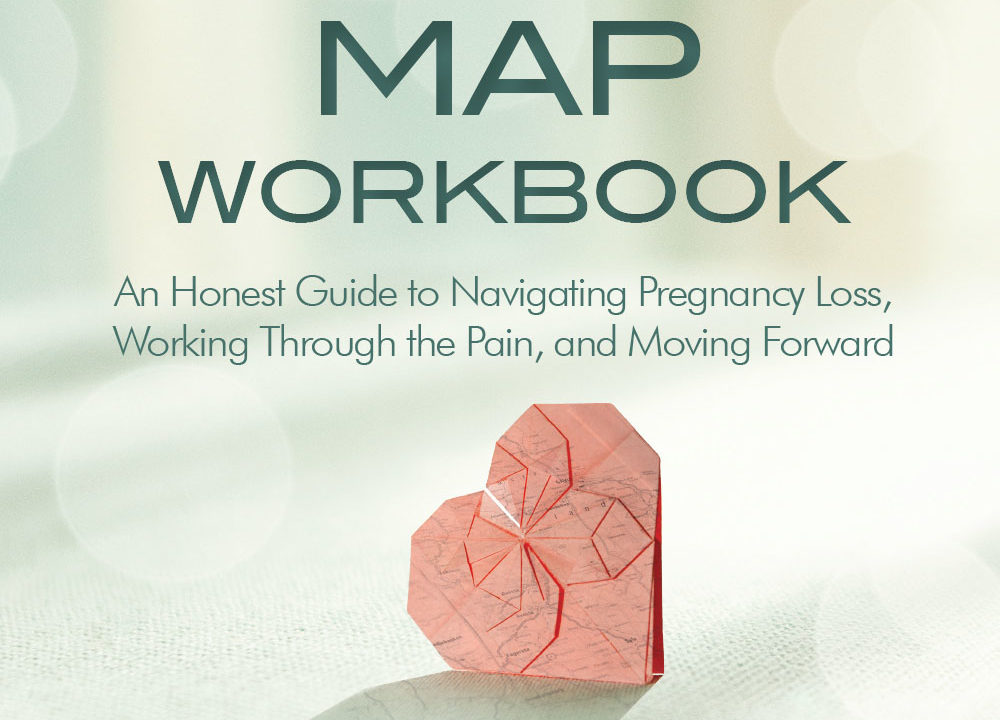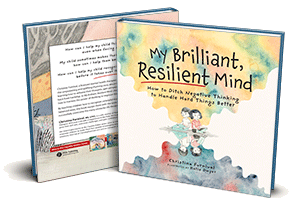Experiencing the trauma of pregnancy loss or miscarriage is something none of us ever want to go through. If you’re on this page, you may have had a miscarriage, or you may be hoping to get pregnant following a miscarriage. Or you may be looking for resources and support. You’re in the right place.
First of all, I’m so sorry you’re going through this.
Pregnancy loss creates a confusing and complicated grief that can feel so isolating. It can feel like you are alone in your experience. There are emotions piled on top of emotions. And it can be hard to work through them all, especially on your own.
An Open Letter to the Mama in Mourning or Yearning to Have a Baby
Another post on miscarriage for you
I was recently sent The Miscarriage Map Workbook by Sunita Osborn, PsyD from PESI Publishing and Media (the same publisher who is producing my children’s book!), and I want to share it with you.
The Miscarriage Map Workbook is a fabulous tool for professionals, as well as for anyone who has suffered and been impacted by the trauma of pregnancy loss or miscarriage.
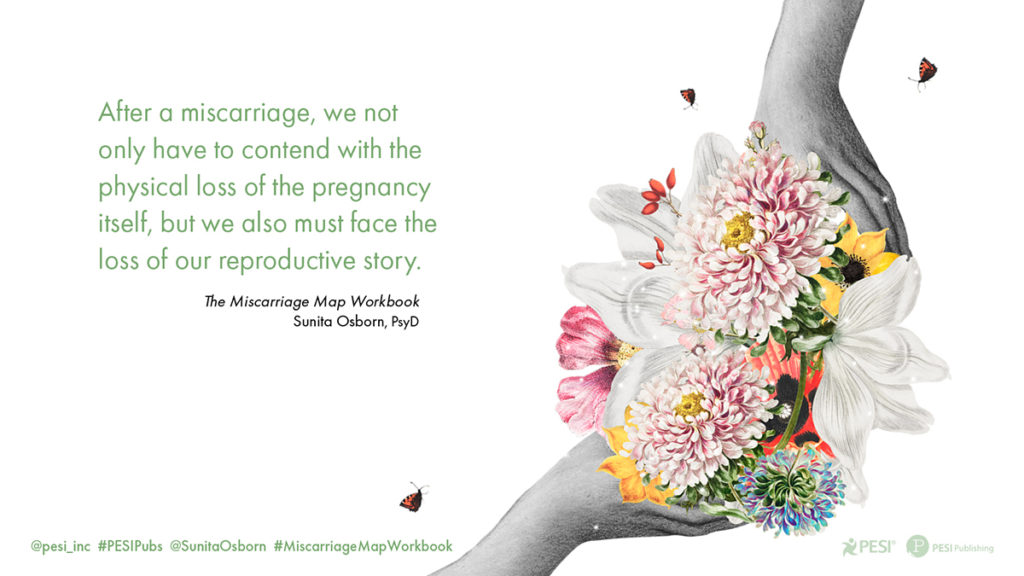
Sunita has expertly crafted an easy-to-follow journey towards healing after a miscarriage. Her authenticity and experience — both personal and professional — are evident throughout the workbook, offering relatable and supportive texts and exercises.
I highly recommend The Miscarriage Map Workbook to you, and I will most certainly be using it in my therapy practice.
So how is this workbook so helpful for moving through the trauma of pregnancy loss?
You explore your thoughts and feelings
As you go through the workbook you really face your experience. Now I hear you, that sounds scary.
Often in an attempt to be self-protective, we turn away from pain thinking we are making ourselves safe, but this approach can actually worsen and intensify the pain.
Truly the most helpful way to process trauma and pain is to explore our experience and its affect on us. Doing so allows us to be more present in our experience. From there we are able to make intentional choices.
Thinking about our thoughts (meta thinking) helps us to integrate what we’ve been through in a safe and healthy way. And to do this, Sunita eases you in, sharing her personal experience and detailing why her exercises are helpful.
Sunita walks us through exploring what your reproductive story is. You will look at what your hopes, dreams, and expectations were before, what your current reality is, and how you want to re-write your story going forward. In doing so, you will look at the themes of intimacy, self-esteem, power & control, trust, and safety.
“When we deny the story, it owns us. When we own the story, we can write a brave new ending.”
– Brené Brown

You create a survival guide
In this workbook, Sunita affirms and validates your experience while offering hope. She normalizes what you’re feeling and explains how every loss, no matter at what stage in the pregnancy, is traumatic.
As you go through, you will look at your specific symptoms of grief. And you will identify ways that you can engage in self-care and self-soothing (and yes, there’s a difference!)
Per Sunita, “self-soothing are activities help us feel better in some way and provide us with a distraction or increased comfort.” Self-soothing activities are great, “but they do not lead to long-term healing.” She distinguishes between them saying that “self-care, on the other hand, is geared toward healing. Self-care is what it sounds like: It is actually taking care of yourself and attending to your physical, emotional, relational, or financial needs.”
Sunita encourages that you return to the survival guide section any time you are in need of extra support, guidance, and self-love.
You learn about how you grieve
When going through grief, it can be very helpful to understand the whys of how we grieve. And when we are grieving pregnancy loss, it is quite complicated.
“The grieving of pregnancy loss is a complicated, painful, and often confusing process. While grieving the loss of your child, you are also mourning the dreams, hopes, and desires you had for your child that was never able to be born.”
Sunita Osborn, The Miscarriage Map Workbook
In this section of the workbook, you will debunk myths about grief. You will also explore what your long-held beliefs about grief are, and how they are impacting you now.
The steps of grief recovery are laid out clearly for you to follow and process. They include gaining awareness, identifying types of loss, memorializing the loss and working towards integration. Sunita will support you through her relevant and helpful exercises.
You find support and help from others
Much of the workbook is introspective work. You will examine and learn about your own process. But Sunita doesn’t leave you hanging with all the work on your own shoulders.
In the chapter Getting Support, you will not only identify the people or communities that can help you, but also the specific ways in which they can help. She will also give you the skills to explicitly ask for what you need.
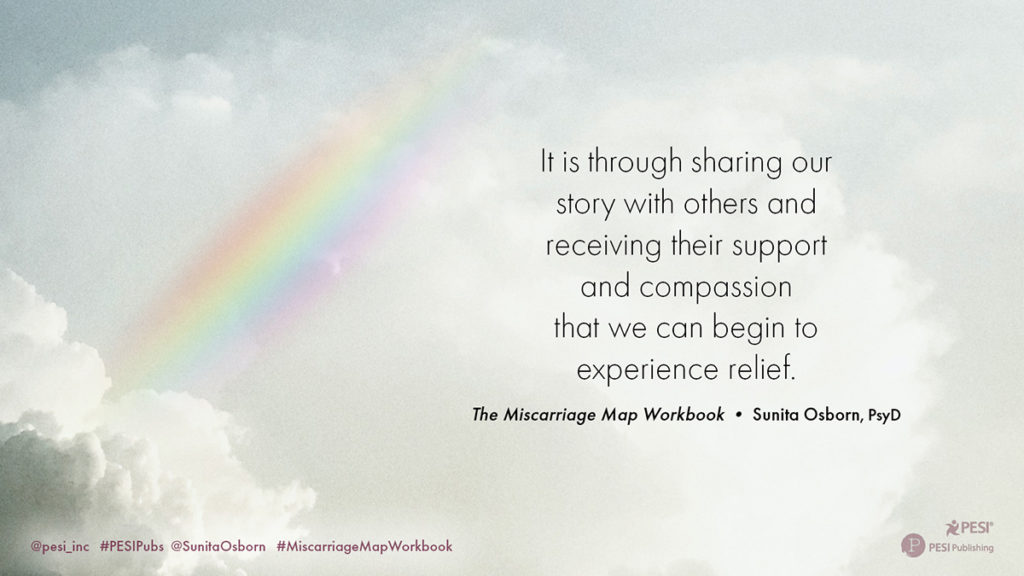
You consider the impact of your loss on your relationships
When we go through the trauma of pregnancy loss and miscarriage, Sunita says it can “disturb the foundation of even the strongest and healthiest of couples. At the same time, the experience of miscarriage does not unequivocally lead to a decay in the relationship. For some couples, the loss may indeed highlight existing fractures in their relationship, but for others, it creates an opportunity to more deeply understand their partner and their relationship.”
Here you will explore how to grieve together, even if you’re grieving differently. You will also learn practical advice helping you to connect or reconnect with your partner.
Sunita doesn’t stop at your relationship with your partner though! She helps you to look at and explore your relationship with yourself, including your relationship with your body. Two big key players here are gratitude and self-compassion.
As you can imagine, The Miscarriage Map Workbook is thorough, comprehensive, and supremely helpful. There is not a part of your life unscathed by miscarriage, and as such Sunita touches on everything to help you process and heal. She guides you through looking forward and writing your own story, while acknowledging your past and being present in the moment.
I highly recommend this workbook and will be sharing about it far and wide.
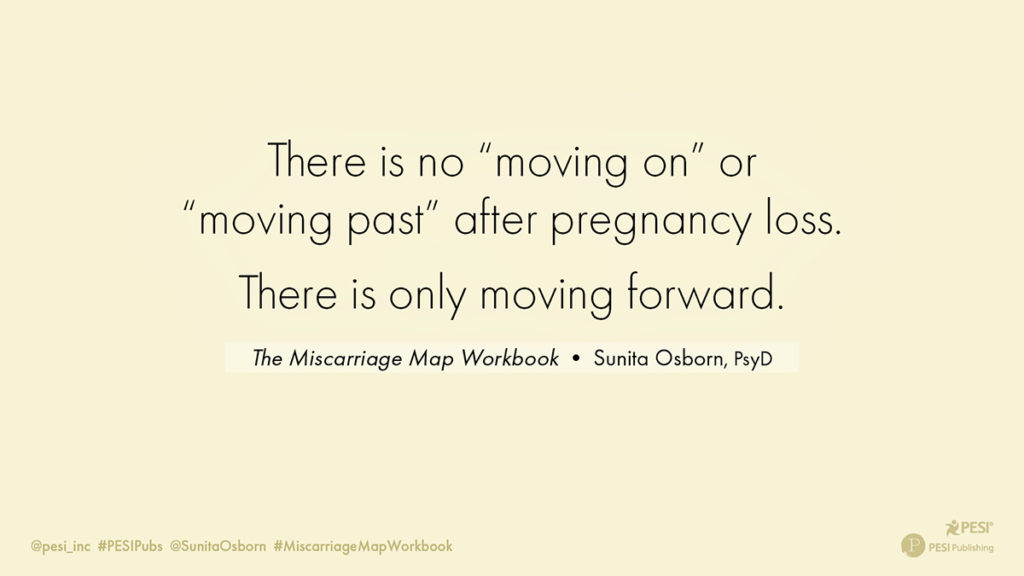
Get your copy of The Miscarriage Map Workbook!
Right now it’s available for Pre-Order at PESI.
And it will be available for purchase on Amazon March 23, 2021.
Sunita created this workbook as a supplement to, The Miscarriage Map – What to Expect when You’re No Longer Expecting, which is a great starting place.


